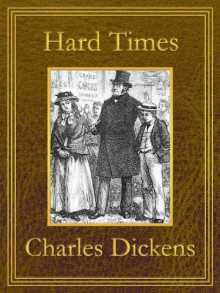This is the BEST version of Hard Times available for your Kindle. This edition is unabridged and includes the original illustrations from the first publication of this work, by artist Harry French. In addition, this ebook has been meticulously proofed for formatting errors and includes a working...
show more
This is the BEST version of Hard Times available for your Kindle. This edition is unabridged and includes the original illustrations from the first publication of this work, by artist Harry French. In addition, this ebook has been meticulously proofed for formatting errors and includes a working Table of Contents with selectable links. Finally, this edition is DRM-free for your convenience.Don't believe this is the best Kindle edition of Hard Times? Download a free sample for yourself and compare it against samples of other Kindle editions: THIS IS THE BEST VERSION available for your Kindle. Don't settle for a version with spelling errors, missing punctuation, bad formatting and no illustrations! Get the best! Satisfaction guaranteed!--------------------------------------------------Information about this title:Hard Times - For These Times (commonly known as Hard Times) is the tenth novel by Charles Dickens, first published in 1854. The book appraises English society and is aimed at highlighting the social and economic pressures of the times.The Utilitarians were one of the targets of this novel. Utilitarianism was a prevalent school of thought during this period, its most famous proponents being Jeremy Bentham and John Stuart Mill. Theoretical Utilitarian ethics hold that promotion of general social welfare is the ultimate goal for the individual and society in general: "the greatest amount of happiness for the greatest number of people." Dickens believed that in practical terms, the pursuit of a totally rationalized society could lead to great misery.Dickens was appalled by what was, in his interpretation, a selfish philosophy, which was combined with materialist laissez-faire capitalism in the education of some children at the time, as well as in industrial practices. In Dickens' interpretation, the prevalence of utilitarian values in educational institutions promoted contempt between mill owners and workers, creating young adults whose imaginations had been neglected, due to an over-emphasis on facts at the expense of more imaginative pursuits.Dickens wished to satirize radical Utilitarians whom he described in a letter to Charles Knight as "see[ing] figures and averages, and nothing else." He also wished to campaign for reform of working conditions. Dickens had visited factories in Manchester as early as 1839, and was appalled by the environment in which workers toiled. Drawing upon his own childhood experiences, Dickens resolved to "strike the heaviest blow in my power" for those who laboured in horrific conditions.
show less

